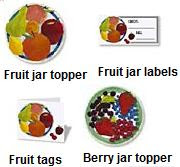
Tight-fitting T-shirts and hipster jeans would get even snugger if you could just spray them on.
That idea just got a little less far-fetched. A liquid mixture developed by Imperial College London and a company called Fabrican lets you spray clothes directly onto your body, using aerosol technology.
After the spray dries, it creates a thin layer of fabric that can be peeled off, washed and reworn.
“When I first began this project I really wanted to make a futuristic, seamless, quick and comfortable material,” says Manel Torres, a Spanish fashion designer and academic visitor at Imperial College in a statement. Torres worked with Paul Luckham, a professor of particle technology at the Imperial College to create the material.
“In my quest to produce this kind of fabric, I ended up returning to the principles of the earliest textiles such as felt, which were also produced by taking fibers and finding a way of binding them together without having to weave or stitch them,” says Torres.
Clothes designed using the spray-on fabric will be shown at the Science in Style fashion show next week at Imperial College.
Spray-painting the body has been around for a while, and you can even get spray-on latex body paint (NSFW). And who can forget the amazing spray-on hair, a staple of Ronco infomercials in the 1980s? But these are illusions, tricks to deceive the eye. The spray-on fabric, in contrast, is lightweight and can be stored in your closet with other clothes.
The spray-on fabric consists of short fibers that are combined with polymers to bind them together and a solvent that delivers the fabric in liquid form. The solvent evaporates when the spray touches the surface.
The fabric is formed by cross-linking fibers, which cling to one another to create the garment, says Fabrican.
The spray-on fabric is pretty versatile. It can be created in many colors and and use different types of fibers ranging from natural to the synthetic, says the company.
The spray can be applied using a high-pressure spray gun or an aerosol can. The texture of the fabric changes according to the type of material — such as wool, linen or acrylic — and how the spray is layered on the body.
Fabrican says the technology is not just for fashion but can have some innovative use in medicine to layer bandages on the skin without disturbing the wound.
The technology is still in prototype stage, and some kinks still need to be worked out, such as the strong smell of solvent around the fabric. The researchers estimate that it will be at least a few years before it can be ready for commercial use.
Another challenge is to find a way to use the spray to create clothes that aren’t very snug. After all, with all the obesity in America, the sprayed-on look for clothes might not work for everyone.
Check out the video below showing how to create a spray-on scarf.


























